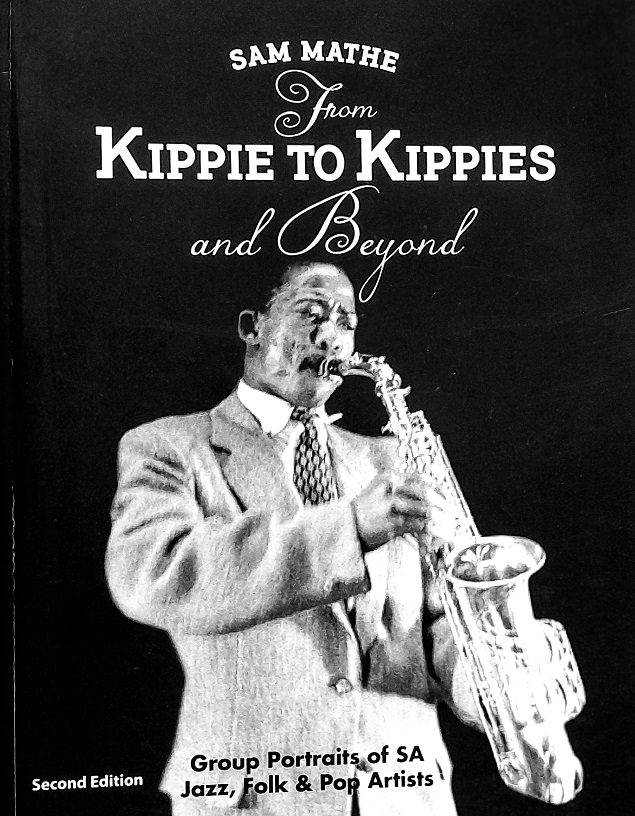THE publication of a review of the tome From Kippie to Kippies and Beyond around the weekend of July 27, 2025 wouldn’t have occurred at an apt moment since the date marks what would have been the late South African alto saxophonist Jeremiah Kippie ‘Morolong’ Moeketsi’s 100th birthday – with the Market Theatre Foundation commemorating the centennial milestone by collaborating with author Sam Mathe in hosting a discussion around the read at Kippies, the music venue fellow jazzophile Abdullah Ibrahim named after the celebrant, on the day.
Lauded as encyclopaedic by notable academic Professor Njabulo Ndebele, the title of Mathe’s
oeuvre, was inspired by the reed player who was born in the Joburg CBD on 27 July 27, 1925 – a decade which revealed the birth of marabi, the ivories-based musical genre of the black working
class which emanated in the slums of the Reef – and died on 27 April 1983, aged 58.
What ultimately resulted is a collation of more than 300 biographical synopses of South African jazz, folk and pop artists (as well as others from the Southern African region whose inclusion is validated based on their studying, working and living in the country) straddling four generations – meticulously spread over more than four hundred pages, and augmented by discographies, a list of documentaries useful for reference, a glossary defining the various musical terms and miscellaneous vocabulary, as well as references.
Mathe’s initial interest lay in profiling the older generation – e.g., the likes of Miriam Makeba,
Abdullah Ibrahim, Chris McGregor, Jacob ‘Mpharanyana’ Radebe, Margaret Mcingana – but eventually decided to include contemporary practitioners such as the likes of Kesivan Naidoo, Tumi Mogorosi, Siya Makuzeni, Zoe Modiga, et al.
A project he initially embarked upon in 2005 and which is now onto its second edition, the format of the group portraits (presented in text, and sans images) comprises of the musicians’ backgrounds, career and discographies – additionally charting music genres ranging from gospel, isicathamiya, jazz, kwela, marabi, mbaqanga, mbube, to Afro-pop, Boeremusiek, kwaito, et cetera.
An erstwhile Drum colleague of mine whose proclivity for music harks back to his pre-teens in the
1970s when he initially heard Moeketsi over the radio, and who later as a student at Wits University frequented music shops such as Kohinoor in Johannesburg – it would had been remiss of the scholarly Mathe not to indulge the reader in off-stage anecdotes such as the Mseleku family’s piano ending up as firewood upon their experiencing hard times after the untimely death of the patriarch – rendering a then 17-year-old Bheki having to resort to the musical Nokwe family, at whose KwaMashu home, he’d tickle the ivories from evening until the following morning, according to the family’s singer daughter, Tu.
Mentioning musical families, also included are the Ngcukana brothers, viz Fitzroy, Ezra, Duke,
Claude, Cyril and Ray.
The scions of the late jazz colossal Christopher ‘Mra’ Ngcukana, the siblings’ involvement in music is reminiscent of the similarly celebrated Marsalis brothers of New Orleans.
Mathe’s effort meanders the reader’s imagination to nostalgia-evoking neighbourhoods of
yesteryear such as Cato Manor, District Six, Dukathole, Duncan Village, Lady Selbourne, New
Brighton, Prospect Township, Sophiatown, et al – the very nativities and basis of both inspiration and despair of some of the featured artists such as Sipho Gumede, Abdullah Ibrahim, Jacob
‘Mpharanyana’ Radebe, Tete Mbambisa, Tlokwe Sehume, Duke Makasi, Miriam Makeba and Thandi Klaasen.
These pioneers’ stomping grounds ranged from Moroka-Jabavu Stadium in Soweto which
in the early swinging 60s launched the careers of some of them via the Cold Castle Jazz Festival, to New Brighton’s Jabavu Road – a stretch domiciling creatives immortalized by local painter George Pemba on his canvasses.
His read is also embellished with formations and figures which either crossed paths with some of the musicians or had remote influence on their respective oeuvres – with mention of notables such as the Wilson ‘King Force’ Silgee-led Jazz Maniacs whom a young Moeketsi admired; Michael Mosoeu Moerane, a venerated composer who taught his nephew, ex-South African president Thabo Mbeki how to play the flute; Mamelodi-raised guitarist Moses ‘Bra Moss’ Mogale’s acquaintanceship with the House of Bondage photographer, Ernest Cole; Bheki Mseleku’s Oxford-educated musician father William’s friendship with Africa’s foremost Nobel Peace Prize laureate, Chief Albert Luthuli; and Blue Notes’ Louis Moholo’s idolization of Xhosa music composer Benjamin ‘B-ka-T’ Tyamzashe.
Of the young blood crop currently holding sway are included, Siya Makuzeni the East London-born trombonist-cum-vocalist whose dexterity was recognized in 2016 with the coveted Standard Bank Young Artist Award; fellow SBYAA recipient, Mandla Mlangeni the son of the assassinated ANC lawyer Bheki, and much-travelled bandleader with a resume which belies his young age; and another SBYAA awardee, the electrifying jazz drummer, Kesivan Naidoo.
The contemporary roster spreads well beyond the trio.
Mathe’s comprehensive list also includes familiar Southern Africa practitioners such as the Kingdom of Lesotho’s swinging jazz drummer Morabo Morojele and singer Tsidii Leloka, Mozambican jazz guitarist extraordinaire Jimmy Dludlu, Zimbabwean ethnomusicologist Louis Mhlanga, et al.
Mathe, who lays claim to having been inspired by Drum writers of the 1950s mostly self-funded his endeavour with some assistance from the Academic and Non-Fiction Authors’ Association of South Africa and the Norwegian embassy – culminating in his tome realizing initial launch in late August 2021, subsequent to Robert McLaren of Themba Books agreeing to a co-publishing deal, after numerous publishing houses had declined him.
He also acknowledged the late records reviewer Zuluboy ‘ZB’ Molefe’s writings (presumably the 1997 tome, A Common Hunger to Sing) as valuable reference for his own endeavour.
An award-winning writer, Mathe’s journalism career commenced in 1994 at the now defunct PACE magazine – with him progressing onto Drum magazine and later Sunday Sun as a senior writer.
He is a founding editor and publisher of Jazz Life Magazine.
His latest role in the media includes writing articles that reflect South African cultural history and heritage.
From Kippie to Kippies and Beyond is published by Themba Books and available on Amazon.

